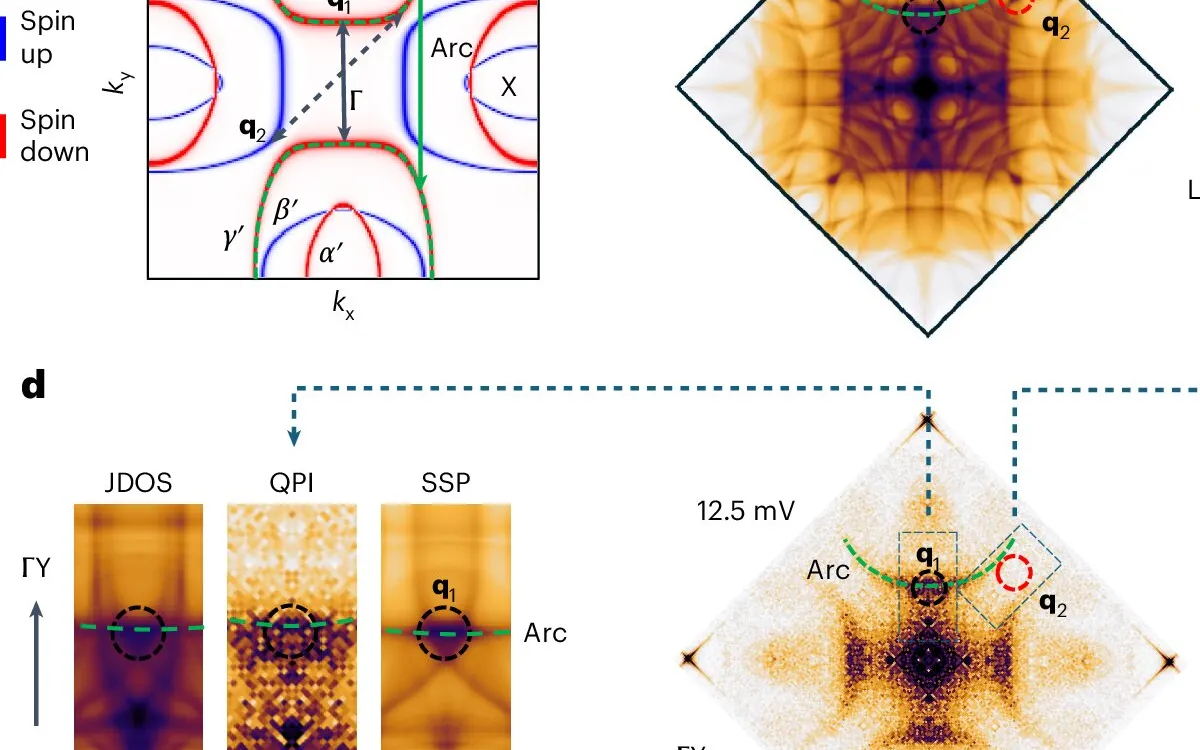
Altermagnets, which exhibit momentum-dependent spin splitting without the need for spin–orbit coupling (SOC) or net magnetization, have recently garnered significant international interest. A groundbreaking study led by Prof. Liu Junwei from the Department of Physics at the Hong Kong University of Science and Technology (HKUST) has been published in Nature Physics. This study marks the first experimental observation of a two-dimensional layered room-temperature altermagnet, validating theoretical predictions made by Prof. Liu's team in 2021 and published in Nature Communications.
The realization and control of spin-polarized electronic states in solids are paramount for advancements in spintronics, a field focused on encoding and processing information through electronic spin. Traditionally, spin polarization is achieved by coupling an electron's spin to various degrees of freedom, such as orbital or magnetic moments. This process can involve SOC, leading to momentum-dependent spin splitting in non-inversion-symmetric crystals, known as the Rashba–Dresselhaus effect. Alternatively, time-reversal symmetry breaking in ferromagnets results in momentum-independent Zeeman-type spin splitting.
In their research, Prof. Liu and collaborators proposed an innovative mechanism for spin splitting in antiferromagnets. They demonstrated that sublattices connected by crystal symmetry allow for exchange coupling, which can produce significant spin splitting with unique C-paired spin-valley locking (SVL). This effect operates independently of SOC or net magnetization, thus combining the stability of antiferromagnetic devices with extended spin lifetimes. These unconventional antiferromagnets, referred to as altermagnets, have been recognized as one of Science magazine's top 10 breakthroughs of 2024.
Despite extensive theoretical and experimental efforts to explore unconventional antiferromagnets based on emerging materials such as α-MnTe, CrSb, MnTe2, and RuO2, none have met the necessary symmetry and conductivity requirements to facilitate nonrelativistic spin-conserved spin currents due to altermagnetism. For example, the magnetic sublattices of α-MnTe and CrSb possess C₃ symmetry, resulting in isotropic conductance and nonpolarized currents. In contrast, MnTe2 suffers from non-conserved spin due to its noncoplanar magnetic structure, and its low critical temperature of 87 K limits practical applications. Furthermore, the antiferromagnetic or nonmagnetic nature of RuO2 remains controversial, despite indications of the anomalous Hall effect and spin splitting.
Another significant challenge is that these materials are not layered, restricting their potential for exfoliation and integration with other materials to control properties at the microscopic level. This limitation hinders the exploration of effects in two-dimensional materials, such as topological superconductors via the superconducting proximity effect and tunable electronic properties through gating and moiré superlattices. Therefore, the exploration of layered materials in altermagnets is crucial for the development of high-density, high-speed, and low-energy-consumption spintronic devices.
Prof. Liu's recent observation of a two-dimensional layered room-temperature altermagnet has shed new light on this promising field. Building on theoretical predictions made by his team for V2Te2O and V2Se2O in 2021, this research demonstrates the realization of C-paired spin-valley locking in a layered, room-temperature antiferromagnet (AFM) compound known as Rb1-δV2Te2O. The study employed advanced techniques such as spin and angle-resolved photoemission spectroscopy (Spin-ARPES), scanning tunneling microscopy/spectroscopy (STM/STS), and first-principles calculations.
Among the key findings are the direct observations of C-paired SVL through Spin-ARPES measurements, revealing opposite spin polarization signs between adjacent X and Y valleys connected by crystal symmetry C. Additionally, temperature-dependent ARPES measurements demonstrate SVL stability up to room temperature, consistent with the AFM phase transition temperature. ARPES findings also confirm a strong two-dimensional character with negligible dispersion in the kz direction, while quasi-particle interference patterns from STM maps indicate suppressed inter-valley scattering due to spin selection rules.
Prof. Liu's work not only marks the first observation of a layered room-temperature AFM metal with alternating magnetic sublattices but also introduces a new type of spin-splitting effect. This discovery provides an ideal platform for further studies and applications in both spintronics and valleytronics. Importantly, all experimental results align well with first-principles calculations, reinforcing confidence in the theoretical framework and suggesting potential access to spin-conserved currents and unconventional piezomagnetism.